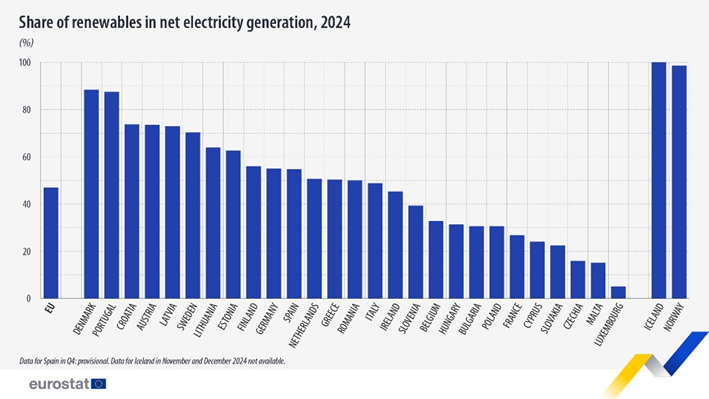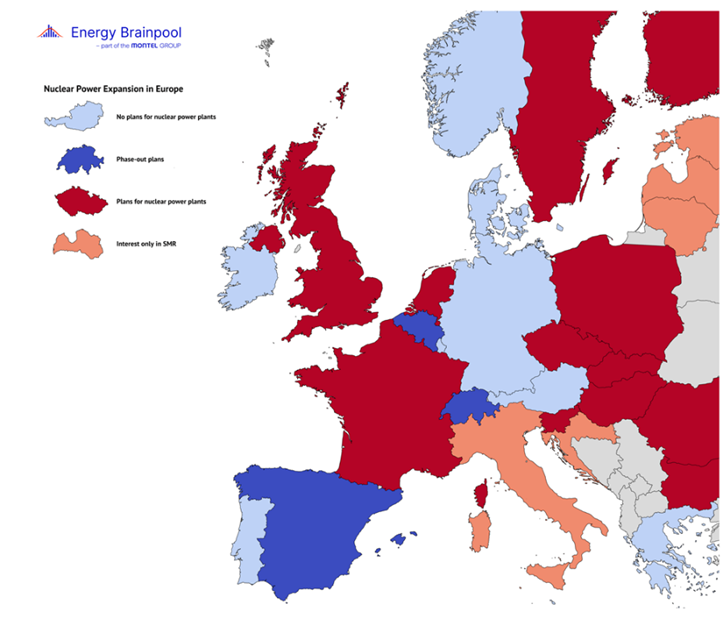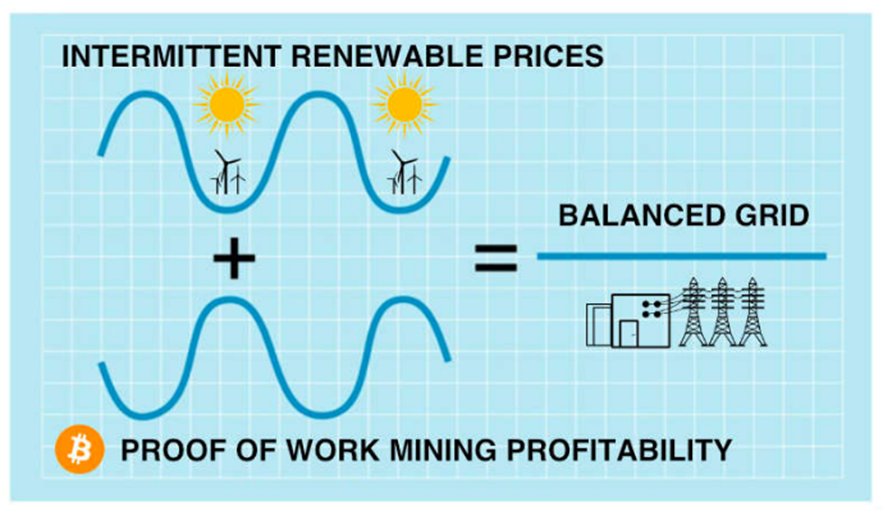Earlier this month, a historic blackout hit Spain and Portugal, leaving 55 million in the dark for over 12 hours. Power’s back—but Europe’s energy system just got exposed.
Introduction
Sky-high energy prices are placing intense pressure on Europe’s industrial base, while other global regions are outpacing Europe in the rollout of clean energy technologies. Heavy dependence on costly imported fossil fuels and exposure to external supply chains have made Europe vulnerable to international shocks.
With global tensions escalating, the urgency for action is greater than ever. Yet within this crisis lie opportunities, and Europe may be more equipped to respond than it seems.
Increasing Energy Demand in Europe
Across the Europe, an increasing number of industries now depend on large-scale electricity supplies, but delays in grid connections are posing serious obstacles to their expansion. Analysts emphasise that Europe’s energy infrastructure is lagging behind rising power demands, triggering an unprecedented wave of permit applications.
The International Energy Agency (IEA) estimates that over 1,500 gigawatts of clean energy projects worldwide have been stalled due to grid connection issues, and approximately $700 billion will be needed to modernise and extend power networks to meet sustainability goals.
Among the sectors most severely impacted are AI and data centres, which consume vast amounts of electricity to fuel computing operations. Training large language models (LLMs) requires immense power, and as tech companies race to lead in AI, McKinsey forecasts the data centre sector will grow by 20% annually over the next six years.
This surge will add strain to an already stressed European grid. McKinsey notes that many clients report waiting as long as eight years for grid access. European transmission system operators are struggling to handle multiple companies trying to connect at the same node simultaneously. This queue-based approach generates uncertainty, forcing businesses to wait indefinitely to secure electricity supply.
These energy challenges are further intensified by broader economic headwinds. Elevated power prices and rising operating costs are contributing to industrial slowdowns, market fragmentation, and a gradual trend of deindustrialisation. Schneider Electric, a global leader in energy management, warns of a looming power supply shortage, with grid connection waiting times stretching from three to five years in high-demand regions.
Carlini, the firm’s vice president for AI and data centres, notes that grid connection applications have skyrocketed in some European countries. Where once only one or two applications were filed per year, authorities now receive up to 1,000 annually. Tackling these delays will require rapid investment in grid expansion and greater efficiency in transmission systems.
The IEA describes this moment as the beginning of a “new age of electricity,” with global demand expected to grow by 3.9% from 2025 to 2027, one of the fastest rates in recent memory. But Europe’s recovery remains fragile— and it is paying the price of its energy dependence.
The Price of Dependency
Europe’s energy vulnerability stems largely from its reliance on imported energy sources. Since the energy crisis triggered by Russia’s invasion of Ukraine, electricity costs have stabilised at approximately 60 to 80 euros per megawatt-hour, nearly double the rates observed throughout the previous two decades. These rates are consistently higher than in most other advanced economies.
The statistics show that in 2024, wholesale gas prices in the EU were nearly five times higher than in the United States, while industrial electricity prices were roughly 2.5 times greater. This disparity undermines European industry, jeopardises employment, and inflates the global cost of European goods.

A key driver of this pricing gap is Europe’s continued reliance on imported fossil fuels. This is especially problematic given that, in many European markets, gas-fired power plants still set the marginal price for all electricity. More than three years after Russian President Vladimir Putin began using energy as a geopolitical weapon, Europe continues to struggle with securing a stable and independent energy supply.
The current market strain reflects the difficulty of fully breaking away from Russian energy. Today, Europe imports 54% of its total energy needs—a record high. For natural gas , imports account for around 90%, with approximately 30% now arriving as expensive liquefied natural gas (LNG), primarily from the US and other non-Russian sources.
In Germany, Europe’s industrial powerhouse, numerous factories were forced to reduce or suspend production due to soaring energy bills. The accelerated withdrawal of gas reserves suggests that the economic pressure on Germany may endure for years to come. During the height of the 2022 energy crisis, Germany mandated rapid gas purchases on the international market at unprecedented prices to refill reserves.
To recoup some of the added expense, the German government implemented a gas-storage levy, charged to traders and utilities transporting gas through the country. The measure has sparked criticism for raising LNG acquisition costs for landlocked nations such as Austria, Slovakia, and the Czech Republic.
Turning Crisis Into Opportunity
-
Diversifying Energy Sources and Investing in Infrastructure
To reduce its dependence on costly energy imports, which significantly influence electricity prices, Europe urgently needs to boost domestic energy production, ideally through clean and renewable sources.
In 2024, renewable energy accounted for 46.9% of the EU’s net electricity generation, highlighting both progress and the remaining gap.

While investment in power grids is essential, time is equally critical. McKinsey emphasises the growing complexity faced by grid operators, pointing to Germany as a case in point. To meet rising demand, Germany must increase its rate of power line construction from 400 kilometres annually to 2,000 kilometres, a fivefold acceleration.
As power constraints continue, companies are turning to innovative solutions to secure reliable power. According to Schneider Electric’s Carlini, data centre operators are building entire “ecosystems of power backup” to reduce dependency on the main grid. These systems may include small modular reactors, compact nuclear units designed for local electricity generation, as a stable energy source for high-demand facilities.
Battery storage and smart charging technologies are also becoming indispensable. These tools allow businesses to store energy during low-demand periods and draw on it during peak times, smoothing fluctuations and ensuring continuous operations.
Ben Pritchard, CEO of power infrastructure provider AVK, notes that some European countries are now receiving 100-megawatt connection requests, orders of magnitude higher than traditional demands. In response, he champions the use of microgrids: localised, self-reliant energy systems that allow firms to operate independently from the central grid and gain greater control over their supply.
In the meantime, Norway introduced flexible grid connection agreements where consumption adjusts according to real-time grid conditions, a model that energy experts believe could optimise distribution across the continent. Complementing this approach, "anticipatory" grid investments allow operators to develop infrastructure based on projected market trends rather than reacting to immediate demands.
Beyond these initiatives, several ambitious projects are currently underway across Europe to address the energy crisis. The North Sea Wind Power Hub, a collaborative effort between Denmark, Germany, and the Netherlands, aims to create an artificial island in the North Sea that will serve as a hub for offshore wind farms with a potential capacity of up to 180 gigawatts by 2045.
Similarly, the Mediterranean Hydrogen Network is developing a comprehensive infrastructure to transport hydrogen from North Africa to Europe, leveraging the region’s abundant solar resources to produce green hydrogen.
2. Leverage Nuclear Energy
Nuclear energy represents one of Europe’s most underutilised resources for achieving energy independence but the divided opinions among member states have prevented the continent from fully capitalising on this potential.
Unlike wind and solar power, nuclear energy operates as a dispatchable, low-carbon technology that delivers consistent baseload power regardless of weather conditions. This reliability makes nuclear particularly valuable for maintaining grid stability as Europe transitions away from fossil fuels. The regulatory framework supporting nuclear development already exists through the Euratom Treaty, established in 1957 as one of the EU’s founding agreements. This treaty created a common market for peaceful atomic energy development, with all member states participating by default.
Political opposition has limited nuclear expansion across much of Europe, driven largely by safety concerns following Chernobyl and Fukushima disasters, as well as high construction costs. These conflicting national positions have also complicated European energy integration efforts. Countries with strong anti-nuclear stances, namely Germany along with Austria, Portugal, Denmark, and the Netherlands, have historically blocked initiatives to classify nuclear power as "sustainable", disadvantaging nuclear investments under European law.
While EU policies set clear targets for renewable energy expansion, there are no similar goals for nuclear technologies. The result is a patchy system where 100 reactors across just 12 of the 27 EU member states produce about 25% of total European electricity. France alone generates over half of EU’s nuclear electricity through its 66 reactors. Outside the EU, nuclear plants in the UK, Belarus, Russia, Ukraine, and Switzerland generate over 30% of electricity in the wider European region.
This situation is starting to shift as Chancellor Friedrich Merz’s new government has ended Germany’s opposition to nuclear power within the EU. Berlin will cease to block French efforts to treat nuclear power on par with renewables, according to the Financial Times. This marks what German officials describe as a "sea-change policy shift".
The change comes as other European nations reconsider nuclear power, with Denmark recently voting to overturn a 40-year nuclear ban and Italy exploring small modular reactors (SMRs) to complement their renewable energy generation.

3. Bitcoin Mining
Amid Europe’s quest for sustainable energy solutions, a potential solution may be in the form of Bitcoin mining operations. Rather than viewing cryptocurrency mining solely as an energy consumer, grid operators are recognising its potential as a dynamic tool for grid stabilisation and renewable energy optimisation.
Bitcoin mining is the process by which new bitcoins are created, and transactions are verified on the Blockchain. It involves solving complex mathematical problems using powerful computers. This process is energy-intensive, but it also offers unique flexibility. Unlike traditional industrial consumers that require consistent power, mining operations can function as highly responsive, flexible load centres that adapt to grid conditions in real time.
During periods of peak renewable generation, when solar installations or wind farms produce electricity beyond immediate demand, mining operations can ramp up activity and monetise energy that would otherwise be wasted. Conversely, when grid demand surges, these operations can power down within milliseconds, and redirect electricity to critical infrastructure and residential consumers.
Bitcoin offers precisely that: around-the-clock adaptability, worldwide, and powered by aligned market incentives. In fact, Bitcoin can help avert blackouts like the one recently experienced in Iberia. This represents a fundamental innovation in power management, the first scalable, market-driven approach to grid flexibility that requires no subsidies.
European regions with significant renewable penetration are already witnessing these benefits. In northern Sweden, mining operations help balance the grid during seasonal fluctuations in hydroelectric output. Similarly, Spanish authorities have noted improved grid performance in regions where mining operations coordinate with solar production curves, helping flatten the notorious "duck curve" that challenges grid operators during sunset hours.

Conclusion
The Iberian blackout represents not merely a technical malfunction but a warning signal regarding Europe’s precarious energy position. European manufacturers face some of the highest energy costs globally, creating substantial obstacles to industrial expansion and international competitiveness. Without substantial infrastructure investment and strategic reduction of import dependencies, similar disruptions appear increasingly probable across the continent.
